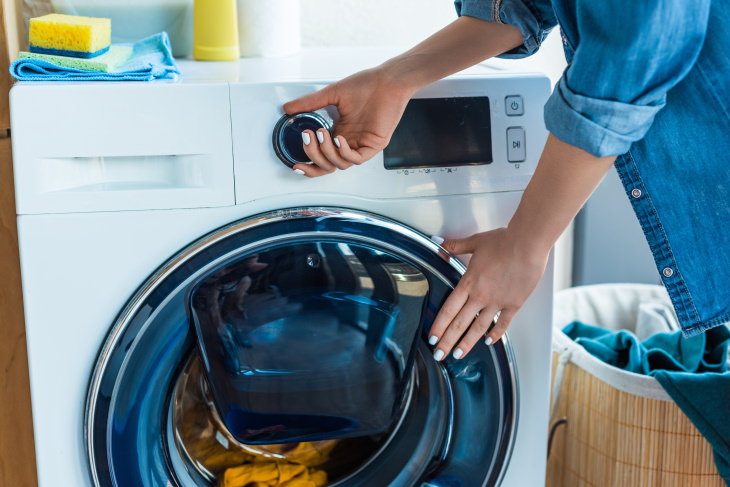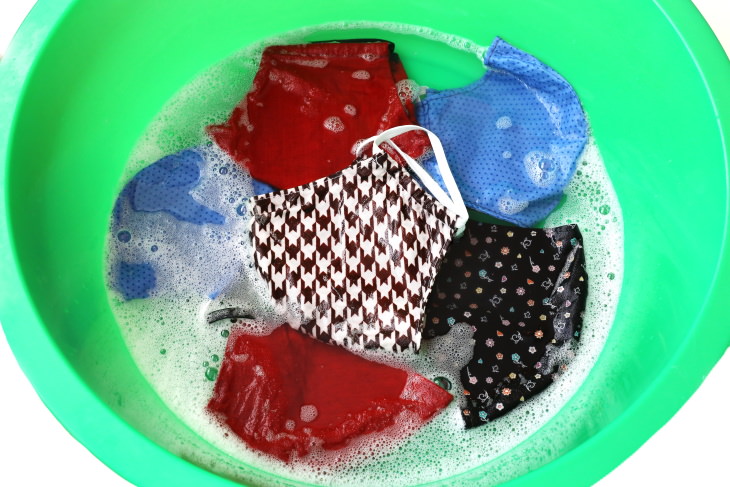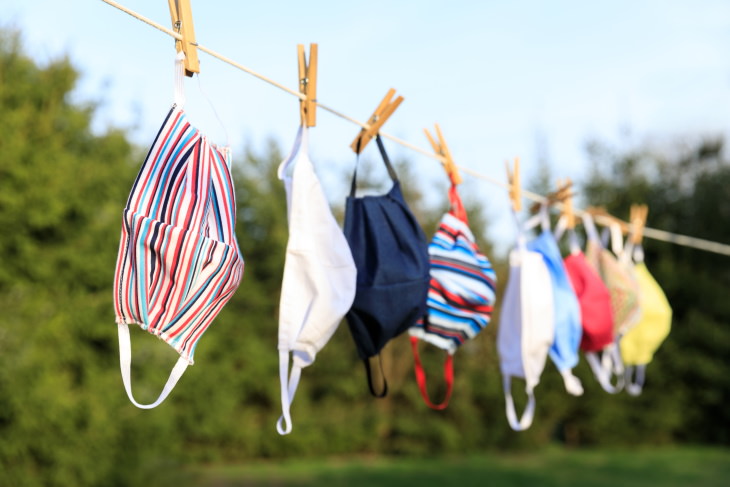1. Cleaning Your Face Mask Too Rarely
Reusing your cloth face mask throughout the day is fine, especially if you’re having an active day full of errands and keep running in and out of the house. However, you must wash your mask every day and every time you contaminate the face mask by touching it with your hands, for example. Reusing the mask too much without washing will render it less effective at protecting you and others from the Novel Coronavirus, and it will also increase your risk of skin rashes and irritation from a face mask.
Needless to say, this means that you should own several face masks and wash these regularly to always have at least two clean masks on hand. Get in the habit of replacing your masks daily, as well as carrying an extra clean mask in your bag just in case.
2. Not Using Detergent When Cleaning Your Masks
Soap remains one of the most effective killers of the Novel Coronavirus, as well as other germs and grime that accumulates on the mask throughout the day. Baking soda and vinegar, on the other hand, cannot destroy the virus on their own, so you have to use some sort of detergent when cleaning your masks, just like you do with your other clothes.
You can wash your face masks together with clothing of similar colors, but we recommend putting your face masks in a laundry bag if you decide to do so to avoid stretching out the elastics or causing snags. Dermatologists point out that you can also use cleaners that contain hydrogen peroxide to destroy any trace of the virus, and also that you should choose hypoallergenic detergents for your face masks if you find that regular detergents irritate your skin.
3. Washing Your Masks in Cold Water
Heat also kills many germs, including the SARS-CoV2 virus that causes COVID-19. Doctors point out that water hot enough can kill the Novel Coronavirus in just 10 minutes, but the temperature must be at least 140°F (60°C). If you rarely wash your clothes at such high temperatures because you’re afraid they will lose color or shrink, no need to worry, a combination of detergent and slightly less hot water will also be able to exterminate the virus.
4. You’re Overdoing It With the Bleach
It’s definitely true that bleach can annihilate COVID-19, but using too much of it isn’t always a great idea, as it can make cloth fibers thinner and weaker, and if you’re not careful, it can bleach out your clothing or face masks, rendering them unusable. With different cleaning options available, you should reserve bleach as a last resort.
If you do want to use bleach, here are the proportions you ought to follow: dilute 1 teaspoon of bleach in 4 cups of water and soak your mask in the solution for 1 hour to render it germ-free. For more information on how to handle bleach when disinfecting your home, click here: How to Kill Germs with Bleach in a Few Easy Steps.
5. You’re Microwaving Your Masks
There is a popular face mask hack circling around the internet these days that suggests you can disinfect your face mask by simply microwaving it like you would with a kitchen sponge. However, this hack isn’t as effective as people make it out to be, and in addition to that, it can be dangerous.
If you have any kind of underwire or metal pieces in a face mask, which is rather common both in disposable and reusable face masks, it can potentially melt and cause sparks in a microwave, and even cause a fire and ruin your microwave oven. Instead, simply wash your reusable masks in the washing machine or by hand using detergent or bleach, and avoid reusing single-use face masks.
6. Just Air-Drying Your Face Masks
Air-drying face masks isn't bad per se, but if you're looking for maximum effectiveness, we recommend using the dryer on the maximum setting to sanitize the masks completely, as any humid areas could potentially harbor germs. If you don’t own a dryer, you can also iron the masks after air-drying completely. When it comes to storing clean face masks, doctors recommend having a separate clean container or bag for the masks.






